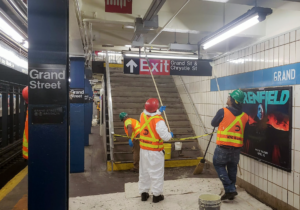Flood-damaged track blocking freight, tourists
Written by adminWorkers will begin repairing train tracks this week after damage from September floods put a major kink in transportation lines in Walker and Chattooga counties in Georgia, according to the Chattanooga Times Free Press. While crews began repairing roads and buildings shortly after the waters receded, the rail line between LaFayette and Summerville remains unusable, according to railway officials. In spots, the heavy wooden ties hang over a foot or more of space where the ground has washed out beneath them.
The line certainly is not
in any shape for the 260,000-pound locomotives or even heavier freight cars
that normally travel the tracks, said Randall Magnusson, general manager of the
Chattooga & Chickamauga Railway. He estimated there is damage along about
8,800 feet of the line, which normally allows for delivery of chemicals to Shaw
Industries in Walker County and Mount Vernon Mills in Trion.
Don Henderson, general
manager at the Trion mill, said four tanker loads of starch are stranded
between two sections of damaged track.
"We’ve got four rail
cars on an island that we really need to get here," he said.
The denim manufacturer,
which uses 180,000 pounds of the starch every two weeks to protect yarn during
high-speed weaving, has had special shipments from Iowa off-loaded in
Chattanooga and trucked down U.S. Highway 27 to the mill.
In addition to the
freight, passenger trains from the Tennessee Valley Railroad Museum haul
Chattanooga tourists to Summerville for festivals and fall leaf tours. With the
flood damage, those trains now stop in Chickamauga.
As for the repairs,
Georgia Sen. Jeff Mullis, R-Chickamauga, said part of the delay is figuring out
who will foot the bill. The state owns the railbed and leases it to the
railway, but both are hoping for federal disaster aid from the flooding.
Money from the Federal
Emergency Management Agency "would not be quick," said Sen. Mullis,
who is chairman of the state Senate’s Transportation Committee.
Rather than wait for FEMA
funds, Magnusson said, the railway decided to repair the tracks and hope for a
reimbursement from the federal agency. He said the beds are designed to
withstand storms, and he could remember only two other instances of damage in
the last 20 years.
"Unfortunately,
sometimes when it comes a rain like that, it’s more than the ditches could hold,"
he said.





